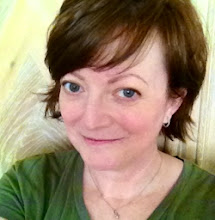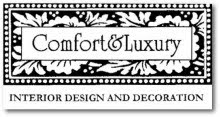


. . . this is what's behind you.

[photo by Matthew Field via Wikipedia]

This map may help give you some perspective as to just how large this property is. See the number 5 in the middle? That's the mansion. The number 7 is the research library and its exhibit halls. To the left of the library is a cluster of dots and symbols surrounding another red roof. That's the entrance, gift shop, offices, etc. Number 23 indicates the North Vista; I'll show you a bit of that in just a minute. Numbers 10, 1 and 6 are other major buildings: the Conservatory through which you enter the Children's Garden; the Scott Galleries and the Boone Gallery. All around the grounds are smaller buildings such as the tea house, Japanese and Chinese structures in their own thematic gardens, trellises, bridges, arbors and gazebos. I was on the property for 4 1/2 hours and only saw the highlights. It would require many visits to see and experience everything.

[via nytimes.com]

Above and below are two views of the Huntington's personal library within the mansion. There is also a smaller, private library in which Henry Huntington conducted business and entertained guests. This room, the large library, was used for entertaining groups and special gatherings and the furniture arrangement was always changing to fit the needs of the occasion. Thus the Regency-period French furniture and original Persian carpets are displayed not in the way the Huntingtons would have lived with them, but to give visitors today the best view of each piece. The room itself was remodelled into an L-shape at Arabella's insistence to accommodate the three enormous 18th century Beauvais tapestries that hang at one end. But you have to look past all that—and the mirrors and chandeliers and intricately carved oak paneling—to see why this room is my favorite. See those floor to ceiling glass-front cabinets? They are full—FULL—of so many books, I can't imagine how long it would take just to count them, let alone read them.
[via nytimes.com]
Fourteen or fifteen cases easily ten feet high and from four to eight feet wide, each packed to capacity with books. You do the math. And, these are but a fraction of the books collected by the Huntingtons. Peering into the cases, nose (almost) against the glass, I saw volumes on the history of Rome and India, accountings of great wars from centuries past, travel diaries from ancient explorations, fact and fiction on every subject imaginable and not one familiar title. Talk about feeling uneducated and unenlightened! But then, in a case near the door, were several volumes of Homer's Iliad and these. . .

. . . a collection of Jane Austen's classic novels. They were bound in a rich teal leather that this photo fails to capture. Dim lighting + reflective glass + sparkly chandeliers shining overhead = difficult to photograph. But there they are. Titles I actually recognized. The coral-red roses and gold imprinting were in pristine condition. At the bottoms of the spines are the words "Chawton Edition". How old does that make them? I tried, unsuccessfully, to find out online. I wondered if these volumes had ever been read or if they were simply "acquired". I wanted to take them home. Don't you think they'd be happier at my house where they'd be touched and loved and cared for, not sealed away behind glass? I do too.

 [via nytimes.com]
[via nytimes.com]
Back in the real world and on the opposite side of the mansion, is the Thornton Portrait Gallery. Recently redesigned to dim the natural light and enhance the paintings and sculpture, this gallery is often a guest's first stop. Because Blue Boy* and Pinkie** live here. See Blue Boy down there at the end of the gallery? Pinkie is on the opposite wall, behind the photographer's back. Here's a better look at them, below. When Blue Boy was acquired by The Huntington in 1921, it became famous around the world for the then record price paid for any painting: $640,000. A typical house in San Marino would cost much more than that today. I have no idea what formula one would apply to determine the current value of something like Blue Boy. Do you?

[via huntington.org]
That's enough of the galleries for now. There's too much in there to talk about here anyway. If you really want to know more about The Huntington and its collections, you can go here—when you're done reading this post, of course. Outside the mansion again, this time to the north, is the aptly named North Vista, below. Flanked by statues, it culminates in a large fountain. On a less cloudy day, the trees of the North Vista perfectly frame a view of the nearby San Gabriel mountains.

This is also the Huntington's camellia garden. Lucky for us, camellias bloom in winter. Also in bloom, at each sculpture's feet, are azaleas in various shades of pink.

This lady stands at the right front corner of the North Vista. I don't know who she is or what she is pointing at but I do know. . .

. . . that I love her camellia corsage and mossy green hair. A few minutes' walk past the North Vista is the Scott Gallery, below. As mentioned before, it houses the Huntington's American Art collection.

[via nytimes.com]
Through the gallery's loggia and across a large lawn is the Conservatory, below, behind which is the popular Children's Garden. Beyond that is the mausoleum, eternal resting place of the Huntingtons.

Turn left in the middle of that lawn and you'll take a short walk up to the small Boone Gallery, below. Inside this building is what brought me to The Huntington in the first place. More on that, next time.

[via huntington.org]
Next post: The Art All Around Us. Here's a hint. . .

* The Blue Boy is thought to be a portrait of Jonathan Buttall, the son of a wealthy British hardware merchant and was painted ca. 1770 by Thomas Gainsborough.
** Pinkie depicts eleven-year-old Sarah Goodin Barrett Moulton and was painted in 1794 by Thomas Lawrence.
Unless noted otherwise, photos are mine.






































































































5 comments:
Wow, what an amazing place to visit - you're right, to do it justice would take days. I too am totally in love with that loggia and since I am currently part way through Sense & Sensibility, I hope you wouldn't mind a quiet reading companion for the afternoon? :)
I can't believe that this is a private home and not a public space -- absolutely stunning!
Dear Tracy, I came upon your site via Pamela Terry's weblog, and how pleased I am to have found you!
This tour of the Huntington mansion is absolutely fascinating and beautifully presented. I was walking through the rooms with you.
It was of particular interest as I knew very little about it until now.
As gardens are a special interest of mine, I shall look forward to your future postings which will cover the grounds of the mansion.
Thank you for the wonderful tour!
Your writing is great and I really enjoyed seeing it through your eyes!!
I'm coming to The Rose Bowl Flea Market on the 14th and am going to try and squeeze in a visit if I can. I've always wanted to visit The Huntington!!
Wow! I like this beautiful place of Huntington mansion. It is really charm casting and amazingly beautiful. I’ll love to be in this mansion for at least a moment of my life. Thank you for sharing this camerawork of Huntington mansion.
Post a Comment